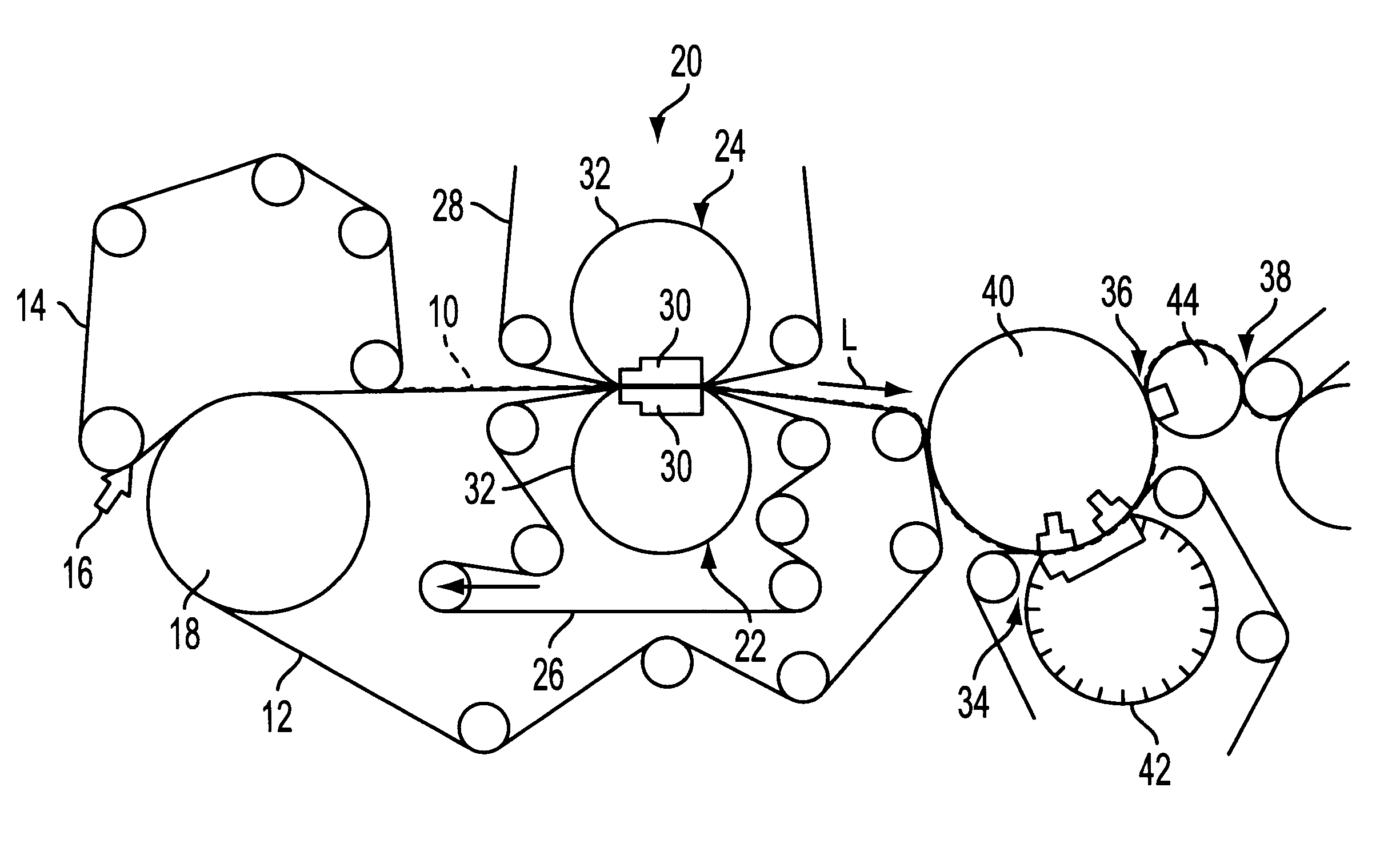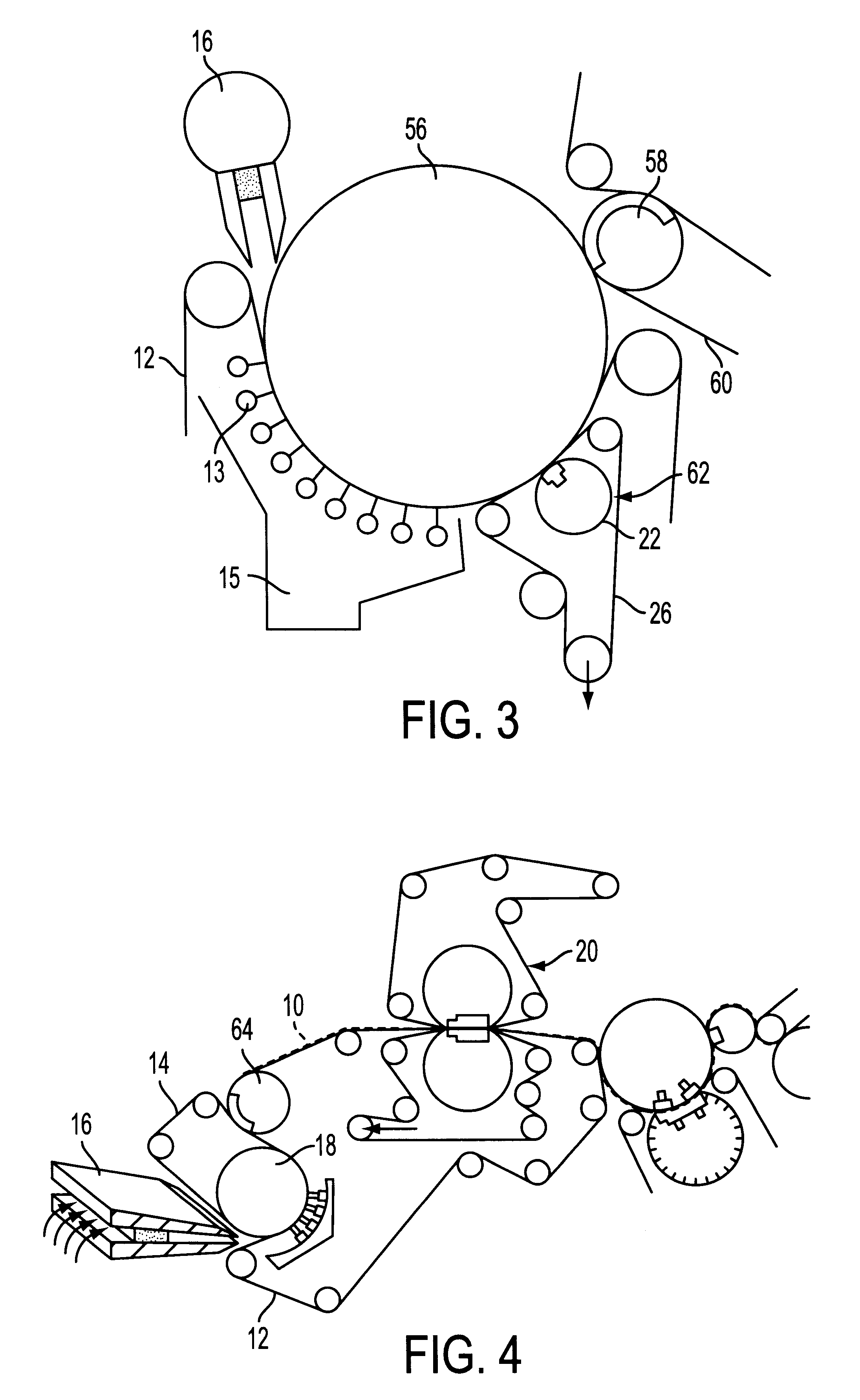Wet press and method for treating a fibrous material web
a fibrous material and wet press technology, applied in the wet end of the machine, papermaking, textiles and papermaking, etc., can solve the problems of excessively large cost of vacuum generation, relatively short screen service life, and high cost of connecting this type of drainage to the machin
- Summary
- Abstract
- Description
- Claims
- Application Information
AI Technical Summary
Benefits of technology
Problems solved by technology
Method used
Image
Examples
Embodiment Construction
The particulars shown herein are by way of example and for purposes of illustrative discussion of the preferred embodiments of the present invention only and are presented in the cause of providing what is believed to be the most useful and readily understood description of the principles and conceptual aspects of the invention. In this regard, no attempt is made to show structural details of the invention in more detail than is necessary for the fundamental understanding of the invention, the description taken with the drawing figure making apparent to those skilled in the art how the invention may be embodied in practice.
FIG. 1 shows, in a schematic side view, shows an embodiment of a wet section of a machine for producing a fibrous material web, in particular a paper and / or cardboard web.
In this wet section, a web forming zone, which includes two convergent screens or sieves or belts 12, 14 is furnished with at least one fibrous suspension flow by a headbox 16. The headbox 16 is ...
PUM
 Login to View More
Login to View More Abstract
Description
Claims
Application Information
 Login to View More
Login to View More - R&D
- Intellectual Property
- Life Sciences
- Materials
- Tech Scout
- Unparalleled Data Quality
- Higher Quality Content
- 60% Fewer Hallucinations
Browse by: Latest US Patents, China's latest patents, Technical Efficacy Thesaurus, Application Domain, Technology Topic, Popular Technical Reports.
© 2025 PatSnap. All rights reserved.Legal|Privacy policy|Modern Slavery Act Transparency Statement|Sitemap|About US| Contact US: help@patsnap.com



